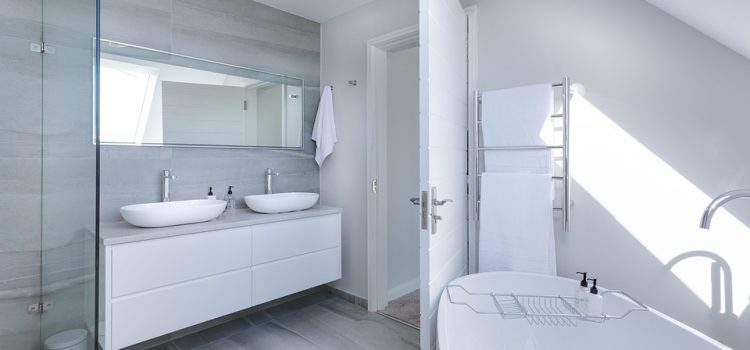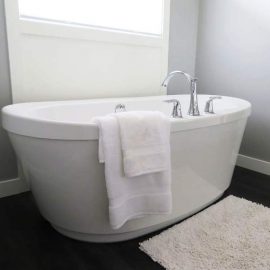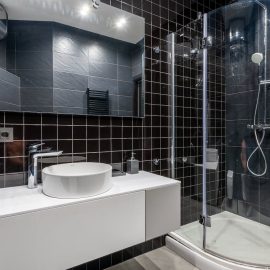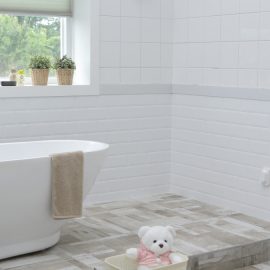
Sanitary equipment refers to all equipment related to health and hygiene, usually installed in indoor water areas (kitchen, laundry room, shower room, bathroom, etc.). These devices are of great interest because they are the most varied and challenging to install. This article will help you better understand the process of installing plumbing fixtures, especially in the bathroom.
What Are the Different Types of Bathroom Plumbing Fixtures?
Whether to install plumbing fixtures or not in your bathroom depends on your choice of interior design and your daily needs. The different bathroom fixtures listed below offer a wide range of options.
Bathtubs
Bathtubs are the most common bathroom fixtures. Not only can bathtub be used to wash your body but also to relax. You can choose from a variety of bathtub sizes, shapes, and materials. For example, a whirlpool bathtub with a forced-air infusion system can massage and relax the body.
Shower Enclosures
If you have installed a bathtub but do not have enough space, shower enclosures are available as an option. A variety of options are available, including integrated seats and storage shelves.
You can choose either of the washbasins, but their installation is not the same. The basin can be installed independently from the supports, but the basin generally has to be placed on top of the furniture and embedded.

Bidets and Toilets
Bidets (bidets) have become increasingly popular in recent years. It is a toilet bowl for personal use.
Toilets are a necessary element of every bathroom. There are two types: suspended and walk-in.
What Are the Items That Need To Be Considered When Installing Sanitary Equipment?
Five parameters need to be taken into consideration for the proper installation of sanitary equipment.
The first is the installation of the water meter. This relates to the general consumption of water. The water meter’s installation is the water company’s responsibility, which also manages the water distribution.
The second parameter relates to the faucets, which are six devices that control the flow of water. The first is the tap, which shuts off the water flow; the second is the valve, which is a type of faucet for large diameter pipes. Third, a valve that can regulate the flow of water in only one direction. Fourth is a safety valve that can control the pressure in the enclosure that drains excess water; fifth, a pressure relief valve, used to limit the water pressure in the domestic network, is installed just after the water meter. The last one is a circulation control device, which is used to visualize water flow in the pipes.
The third parameter relates to the pipe, which comes in several models depending on the basic material (solid iron, copper, PVC) and its size.
The fourth parameter is the location of the sanitary equipment, which depends on the interior layout of the bathroom. This location is related to the connection of the components of the water supply network.
The fifth parameter is related to wastewater drainage, which is provided by a good sewerage system. For this purpose, it is necessary to separate gray water pipes (from sinks, showers) and black water (or black water, from toilets).
Who Can Install the Sanitary Equipment?
Installing sanitary equipment is very complicated and requires a certain amount of versatility. In fact, the installation may require knowledge of masonry or electricity. Therefore, it is wise to hire a professional company.



